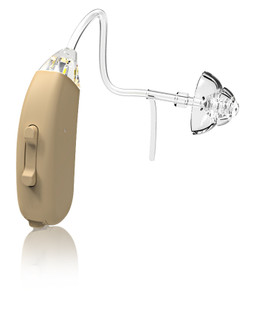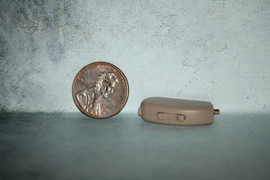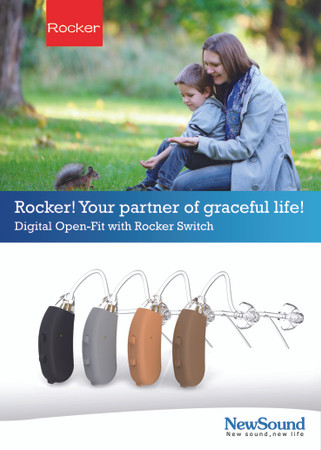Choosing the Right Behind-the-Ear Hearing Aid: A Buyer's Guide
Posted by DR Paul on Aug 04, 2023
Are you looking to invest in a behind-the-ear hearing aid? With so many options available, it can be challenging to know where to start. That's why we've compiled this comprehensive buyer's guide to help you find the right one for your needs and lifestyle. Whether you're a first-time user or looking to upgrade, this guide will provide you with the information you need to make an informed decision.
What is a behind-the-ear hearing aid and how does it work?
Behind-the-ear hearing aids, or BTEs, are one of the most popular styles available today. As the name suggests, they sit comfortably behind the ear and are connected to a thin, clear tube that channels sound into the ear canal. BTEs are ideal for all degrees of hearing loss and are available in a range of colors and styles. They work by capturing sound waves through a tiny microphone, converting them into electrical signals, and amplifying them to a level that's comfortable for the user.
What factors should you consider when choosing a BTE hearing aid?
When choosing a behind-the-ear hearing aid, several factors come into play, including your hearing needs, lifestyle, and budget. Some BTEs are designed to provide a high level of amplification and are ideal for those with severe hearing loss. Others are more discreet and offer advanced features such as Bluetooth connectivity and remote adjustment. If you're an active person, you might want to consider a BTE that's water-resistant and can withstand sweat and moisture. It's also essential to consider the size and placement of the hearing aid, as some models may be more visible than others.
Why is it crucial to choose the right size and fit for your BTE?
The right fit and size of your behind-the-ear hearing aid can make all the difference in your hearing experience. A poorly fitting device can cause discomfort or even fall out of the ear, while an oversized one may be noticeable and affect your confidence. Audiologists use a range of measurements, including your ear canal size and shape, to ensure a custom fit that's both comfortable and effective. Some BTE models also come with various earpieces and dome sizes to accommodate different ear sizes and shapes.
How do you maintain and care for your BTE hearing aid?
Like any electronic device, a BTE hearing aid requires proper care and maintenance to ensure optimal performance and longevity. Cleaning the outer surfaces regularly with a soft, dry cloth can prevent the buildup of earwax, moisture, or other debris. You should also remove the battery when not in use to prevent corrosion and store your hearing aid in a dry, cool place. Regular visits to your audiologist can help identify any issues with the device and make necessary adjustments, such as changing the battery or cleaning the tubing.
What are some other features and considerations to keep in mind when choosing a BTE hearing aid?
When choosing a behind-the-ear hearing aid, some additional features to consider include:
Noise reduction technology to help filter out background noise
Tinnitus masking to provide relief for those with ringing or buzzing in their ears
Rechargeable batteries for convenience and cost savings
Smartphone connectivity to stream music or phone calls directly to your hearing aid
It's also essential to consider the warranty and return policy of any hearing aid you purchase, as well as the ongoing cost for batteries, maintenance, and repairs.
Conclusion:
Choosing the right behind-the-ear hearing aid can be overwhelming, but with the right knowledge and guidance, it's possible to find a device that fits your specific needs and lifestyle. Remember to consider factors such as hearing needs, fit, maintenance, and features when making your decision. Working with a qualified audiologist can make a significant difference in your hearing experience, and ongoing care and maintenance are crucial for optimal performance. With the right hearing aid, you can enjoy improved hearing and a better quality of life.










